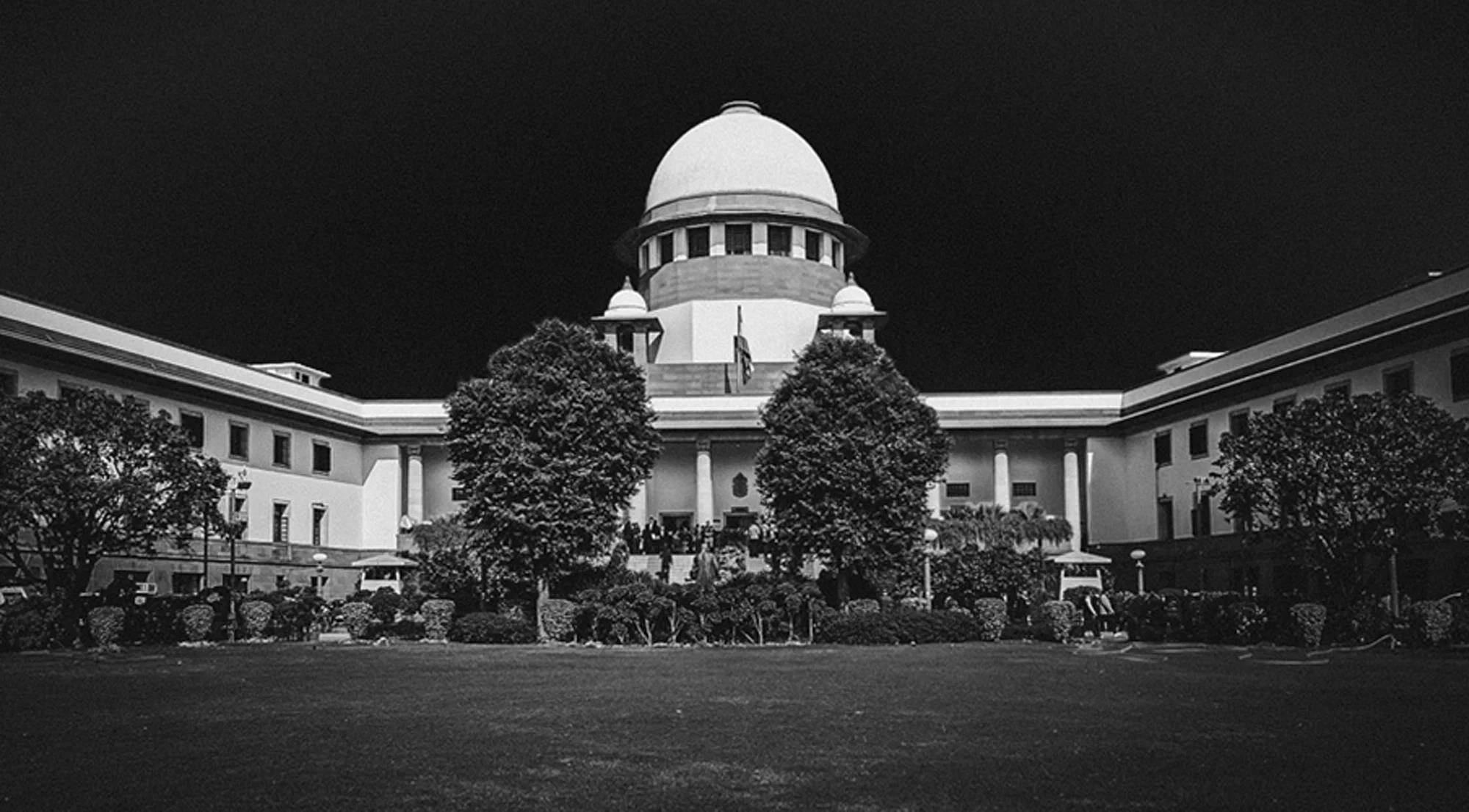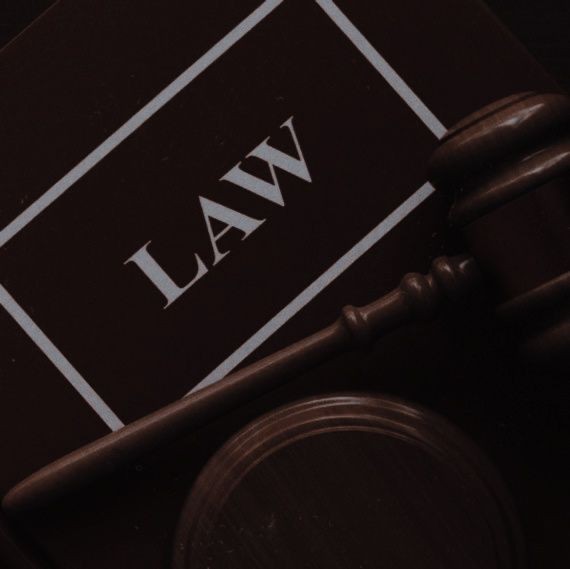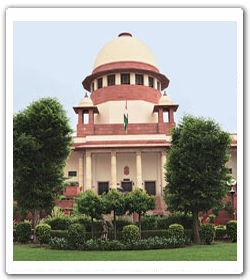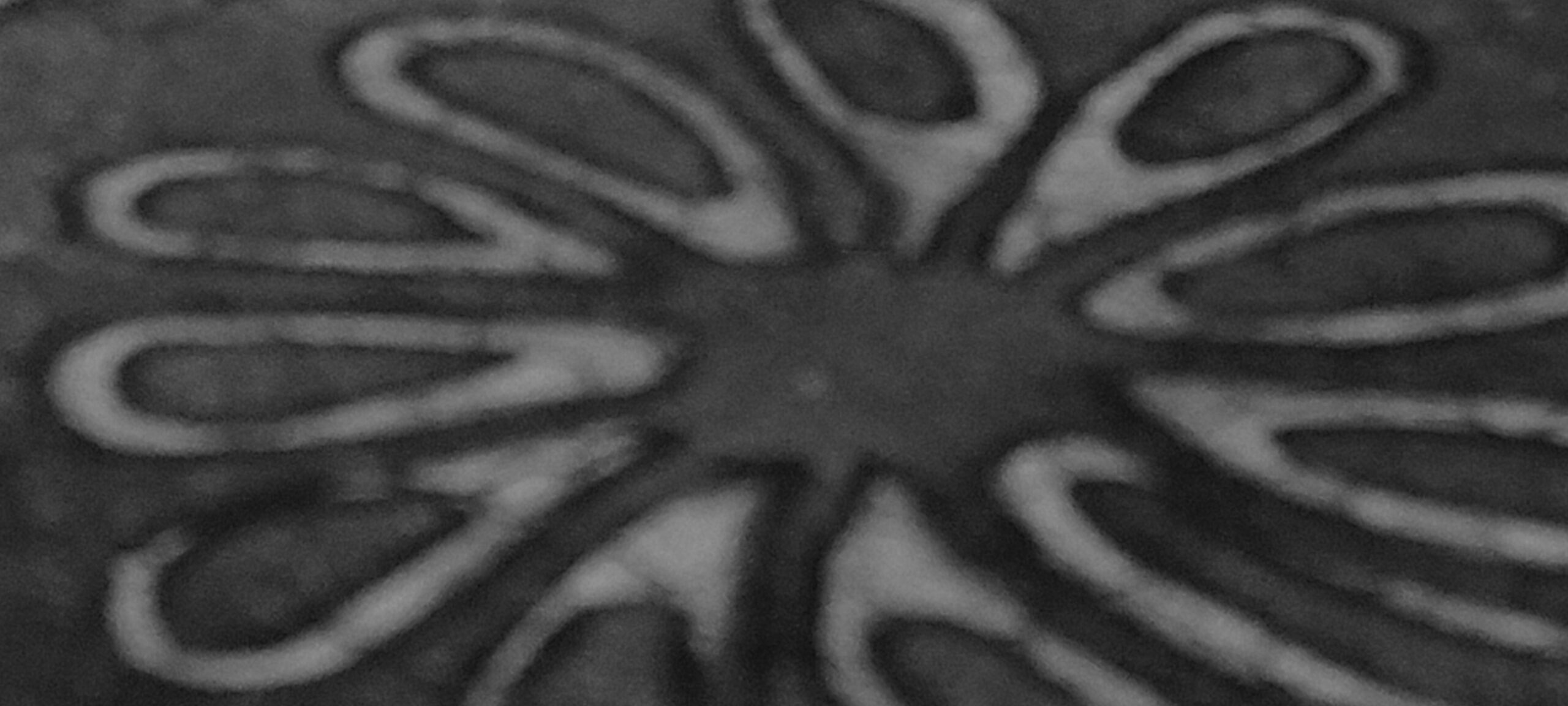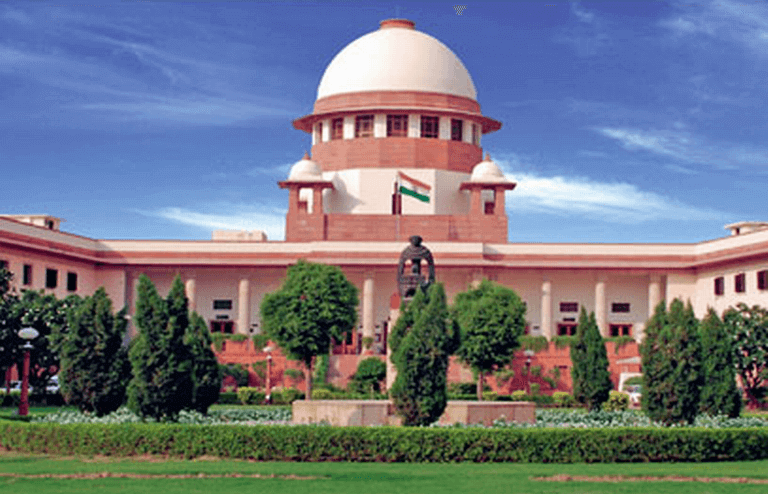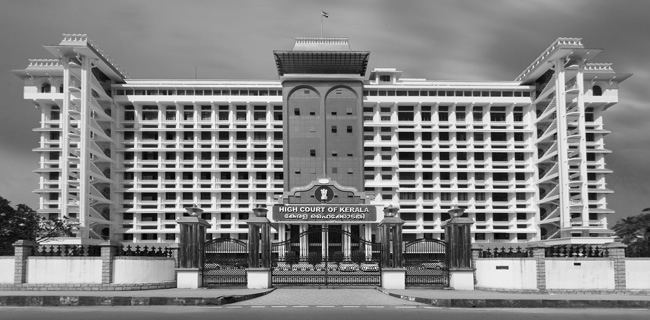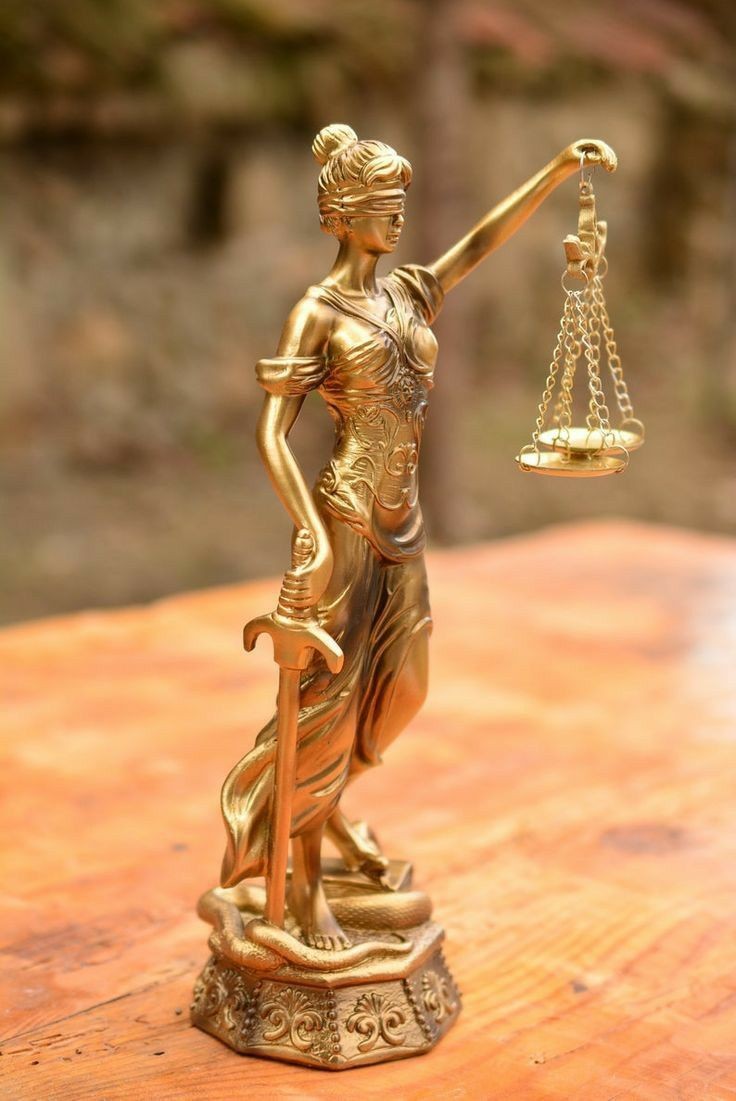Rejection be the rule and reception an exception
[N.AJITH, Advocate, High Court of Kerala[1]]
[CPC Series - 02]
Evidence is the medium through which the court is convinced of the truth or otherwise of the matter under enquiry, i.e. the actual words of witnesses, or documents produced and not the facts which have to be proved by oral and documentary evidence. The word 'evidence' is not restricted only to oral and documentary evidence, but takes in others like material objects, the demeanor of the witnesses, facts of judicial notice could be taken, admission of parties, local inspection made and the like. Evidence is the tool by which the Court assesses the proof of a fact. Sec.101 is not on a specific 'party', but generally on a 'person who is bound to prove the existence of a fact'. Evidentiary burden is on the party to prove the particular fact which he had pleaded. The principle is simple, 'you came to the court, so you should prove your case".
O.18 Rr.1 and 2 CPC would insist that the plaintiff has the right to begin unless the defendant admits the case. It is trite that legal burden is constant but evidentiary burden is like a pendulum till the court is at on a finding. Rule 2 would say that “the party having the right to begin shall state his case and produce his evidence in support of the issues which he had to prove" to get an order in his favour. 'Right to begin' in a way is 'the duty to begin' in terms of Sec.101 Evidence Act.
The right to adduce evidence to support one's case is a non-derogable right. Denial of such a right is for sure, denial of justice[2].
The salutary principle is that the judgement of a court of law cannot be trifled with and neither de-novo trial nor reversal of its decision can be ordered for inconsequential reasons. Ordinarily, bringing new and important matter to the notice of the Court is by way of an application for review in the same court.
The reception of additional documents can, in appropriate cases, tilt the scales of justice either way. Denial of reception of such documents in a manner opposed to law is denial of justice to a party. Production of additional document is a valuable right given to the parties. While admitting documents as additional evidence the court has to assign reasons. But while dismissing it, the court need not. But it is highly desirable and useful that the court gives reasons while dismissing the application, so that appellate court can appreciate why the documents were rejected; for the rejection of documents at the appellate stage will always be the subject matter of challenge in the appeal[3].
Sec.107 (1) (d) and O.41 R.27 of the Code of Civil Procedure, 1908 and Sec.167 of the Evidence Act should be read together and harmonious approach need be opted. Rigor in Sec.165 of the Evidence Act is upheld ofcourse, but eased a little in Sec.107 and O.41 R.27 CPC, the procedural provisions being handmaid of justice.
Sec.167 Evidence Act is unbending saying no new trial for improper admission or improper rejection of evidence. Reception of inadmissible evidence is less injurious than rejection of admissible evidence. In the former case, in arriving at a decision, the evidence wrongly admitted can well be excluded from consideration and in the latter case, the evidence wrongly rejected can only be brought on record by taking recourse to further proceedings[4].
Sec.107 of the Code empowers the appellate court “to take additional evidence or to require such evidence to be taken subject to such conditions and limitations as may be prescribed". O.41 R.27 CPC prescribes the conditions and limitations for the reception of additional evidence. The former part of the Rule says that the parties to an appeal shall not be entitled to produce additional evidence whether oral or documentary, in the appellate court. The latter part prescribes two classes of cases where the appellate court may allow additional evidence to be produced[5]. O.41 R.27 is very clear to the effect that the parties to an appeal shall not be entitled to produce additional evidence, whether oral or documentary unless they have shown that in spite of due diligence, they could not produce such documents and such documents are required to enable the court to pronounce a proper judgment[6].
O.41 R.27 of the Code is not intended to allow a litigant who has been unsuccessful in the court below to fill up the loopholes and omissions. Appellate court is not expected to allow a party to supplement the evidence already adduced by permitting him to produce more documents[7].
The sine qua non for admissibility of additional evidence at the appellate stage is the 'court's own requirement of the document' to enable it to pronounce judgment. Where the judgment could be pronounced in the absence of the document, the appellate court should not allow the document to be produced. The true test is whether the judge considers that he requires the additional evidence to enable him to pronounce judgment. A distinction has to be made between a document which is necessary to prove a party's case and one that is necessary for the court for the purpose of discharging its duties. In cases of the former category, invitation for evidence at the appellate stage by a party, be it the State itself, must be resisted while in the latter case even if there is some negligence on the part of the party, even if it is a State, in producing the document, the court has to allow such evidence to be brought up in appeal, for its own sake[8].
Clauses (a), (aa) and (b) of sub rule (1) of R.27 are totally different in situations and their fields of operation. Clause (a) covers a situation where the lower court has improperly refused to admit the evidence which ought to have been admitted. Clause (aa) is applicable to production of additional evidence which was not within the knowledge of the party, or could not, even after exercise of due diligence, be produced by him at the time when the lower court passed the decree or made the order. Clause (b) operates in a totally different situation. There, it is the court, the appellate court which requires additional evidence, on one of the two grounds, ie; (i) for pronouncement of judgment or (ii). For any substantial cause. In either case, it is the requirement of the appellate court. Clause (a) has no application if the document or evidence was never tendered in evidence or produced at the trial[9].
Section 107 (1) (d) of the Code empowers the appellate court to admit additional evidence. O.41 R.27 provides for the grounds on the availability of which alone an additional evidence may be let in[10].
Court exercising power under Sec.107 CPC, cannot vacate the interim order granted by the trial court[11].
The Supreme Court refused to admit a document which was not produced in the High Court (on facts)[12].
The trial court's appreciation of evidence is generally not disturbed by the appellate court[13].
The trial Court gave cogent reasons for refusing to accept the testimony of a witness. The appellate court must deal with those reasons before forming a contrary opinion[14], but the Appellate Court is bound to consider any change either in fact or in law, which has supervened since the judgement of the Court below was made[15].
An appellate court has the power under Sec.107 of the Code to remand a case or to frame issues or take additional evidence or require such evidence to be taken. Exercise of such power is regulated by O.41 R.23 to 25 and 27 CPC[16].
The provisions of O.41 R.27 are not engrafted to patch up the weak points or to fill up the omissions in the court of appeal. Nor do they authorise to legalise or fill up the lacunae[17].
The appellant /plaintiff claimed declaration of ownership over suit property and permanent injunction against the Respondent/defendant. In the written statement, it was specifically contended that the suit land was acquired by the State Government and later handed over to the Respondent/defendant. The trial court found ownership of the suit land in the appellant/plaintiff but dismissed the suit. In plaintiff's appeal, defendant sought leave to produce additional evidence. The application showed that (a) documents to be led in additional evidence were essential for deciding the rights of the parties; (b) the documents being public documents do not require any further proof; (c) the documents were referred to in the pleadings; and (d). appellate court has jurisdiction to allow the application for additional evidence if satisfactory explanation was given as to why such document was not filed/produced during trial. The High court was right in the finding that the Respondent /Defendant had offered valid explanation for the non-production of acquisition documents during trial; and thus justified in allowing application under O.41 R.27 CPC[18].
Grounds for adducing additional evidence
Generally, the appellate court should decide the appeal on the evidence led by the parties. Sec.107 (1) (d) CPC is the exception and empowers the appellate court to take additional evidence or require such additional evidence, but subject to the conditions laid down in O.41 R.27 CPC. The appellate court should not pass an order so as to patch up the weakness of the evidence of the unsuccessful party before the trial court, but it will be different if the court itself requires the evidence to do justice between the parties.
The ability to pronounce judgment is to be understood not as the ability to pronounce any judgment but the ability to pronounce a satisfactory and fair judgment to the satisfaction of the court delivering it and which is capable of doing justice between the parties. Mere difficulty is not sufficient[19].
The term 'additional evidence' does not convey the meaning 'that evidence over and above the evidence led by the party in the court below'. Such a view would introduce an additional condition which is never contemplated by the Code. O.41 R.27 does not classify a person as one who has led some evidence and one who led no evidence at all. Applicability of Order 41 Rule 27 is not limited only to those cases where some evidence had been led in the trial court[20].
A combined reading of Sec.167 Evidence Act and Sec. 107 and O.41 Rr.27 would provide a lucid idea that the purpose of the legislation is to assist the court to do justice in the case in hand. `
O.41 R.27 specifically provides for the grounds on the availability of which additional evidence may be adduced[21].
Whenever the court finds difficulty in deciding an issue, it can direct additional evidence to be adduced, treating the need for evidence as a 'requirement of the court' for pronouncing a satisfactory judgment. It would be 'other substantial cause' under O.41 R.27 (1) (b). The question whether looking into the documents sought to be filed as additional evidence would be necessary to pronounce judgment in a more satisfactory manner has to be considered by the court at the time of hearing the appeal on merits. The appellate court has the power to allow additional evidence not only if it requires such evidence “to enable it to pronounce judgment" but also for “any other substantial cause". Though the general rule is that ordinarily the appellate court should not travel beyond the record of the court below and additional evidence, whether oral or documentary is not admitted, but Sec.107 CPC, which carves out an exception to the general rule, enables the appellate court to take additional evidence or to require such evidence to be taken subject to such conditions and limitations as may be prescribed under O.41 R.27 CPC[22].
Parties to an appeal shall not be entitled to produce additional evidence in appellate court unless conditions stipulated under O.41 R.27 CPC are satisfied, namely, refusal by trial court to admit that evidence which ought to have been admitted. Evidence not within the applicant's knowledge or could not after exercise of due diligence, be produced by him during the pendency of suit in the court below[23].
If the evidence, as a whole, can reasonably be regarded as justifying the conclusion arrived at the trial, and especially if that conclusion has been arrived at the trial, and especially if that conclusion has been arrived at on conflicting testimony by a tribunal which saw and heard the witnesses, the appellate court will bear in mind that it has not enjoyed this opportunity and that the view of the trial judge as to where credibility lies is entitled to great weight. This is not to say that the judge of first instance can be treated as infallible in determining which side is telling the truth or is refrained from exaggeration. Like other tribunals, he may go wrong on a question of fact, but it is a cogent circumstance that a judge of first instance, when estimating the value of verbal testimony, has the advantage (which is denied to court of appeal) of having the witnesses before him and observing the manner in which their evidence is given[24].
Even if admissible evidence has been wrongly rejected by the first court, the appellate court will not interfere, if the findings are soundly based on other evidence on record[25].
Procedure to be followed by the appellate court
An appeal is the continuation of a suit. Appellate court has got the very same powers as that of a court of original jurisdiction[26]. Where the lower appellate court allows additional evidence to be produced for cogent reasons, High Court cannot interfere unless the admission of additional evidence is totally unjustified or completely unwarranted. When the appellate court requires additional evidence to be produced for cogent reasons, next appellate court cannot interfere[27].
The court refused to adduce additional evidence at appeal stage giving stress on P. Rama Reddy's case[28]. The said decision has been overruled and application for provision for urging additional grounds allowed and documents annexed thereto were directed to be marked as exhibits[29].
Appellate Court should require additional evidence only if, after examining the evidence on record, it perceives some defect in it[30].
Requirement of recording reasons for allowing production of additional evidence is directory. But, omission to record reasons is a serious defect. Though reasons need not be recorded in a separate order, they should be embodied in the appeal judgment. The courts of appeal should not overlook the provisions of O.41 R. 27(2) and should record their reasons for admitting additional evidence. The object of O.41 R. 27(2) is to keep a clear record of what weighed with the appellate court in allowing the additional evidence to be produced whether this was done on the ground (i) that the court appealed from had refused to admit evidence which ought to have been admitted, or (ii) it allowed it because it required it to enable it to pronounce judgment in the appeal or (iii) it allowed this for any other substantial cause. Where a further appeal lies from the decision of the appellate court such recording of the reasons is necessary and useful also to the court of further appeal for deciding whether the discretion under the rule has been judicially exercised by the court below. The omission to record the reason must, therefore, be treated as a serious defect. The provision is, to an extent directory, though the word 'shall' have been used in R. 27(2)[31].
An appellate court should not allow additional evidence which impeaches testimony without calling the impeached witness and giving him an opportunity to contradict it[32].
In second appeal, it is not open to the High Court to interfere with the findings of the courts below, unless perverse[33].
Unless and until procedure under O.41R.27, 28 and 29 are followed, the parties to appeal cannot be permitted to lead additional evidence[34].
Appellate court will not remand a case, where, considering the evidence on record, it can decide the issue itself[35].
No document can be taken in as additional evidence, where the document has not been put to the plaintiff when he was deposing as a witness in the suit[36].
O.41 R.27 does not require filing of an application for admission of additional evidence though an application setting forth grounds may be desirable. Statutory provisions including rules of procedure are intended to advance the cause of justice and not for its denial on technical grounds. Application is insisted where the party wants to file additional evidence, separate petition with notice to the opposite party is indispensable. Mere production of additional evidence along with appeal memorandum is not sufficient to meet the statutory requirements[37]. In a rent control matter, [from Delhi], Honourable Supreme Court had an occasion to direct the Registry to frame appropriate Rules as to the manner and process of filing application for production of additional evidence in Civil Courts[38].
Mode of taking additional evidence
Once additional evidence is permitted at appellate stage, other side must be given an opportunity to lead rebuttal evidence to counter additional evidence. Appellate court has two options; (i). take recourse to remand the entire matter, under O.41 R.23A of the Code, for retrial; or (ii). makelimited remand, under O.41 R.25 of the Code, retaining the main appeal with itself so that parties can lead evidence on particular issues in the light of additional evidence and then decide the main appeal on merits. Appellate court should act either under R.23A or R.25 and its failure results in jurisdictional error[39].
Unless and until the procedure under Order 41 Rules 27, 28 and 29 is followed, the parties to the appeal cannot be permitted to lead additional evidence and/or the Appellate Court is not justified to direct the Court from whose decree the appeal is preferred or any other Subordinate Court, to take such evidence and to send it back[40].
When documents are taken in additional evidence, an opportunity ought to have been given to other party to lead evidence. The principles to be followed for deciding the application under Order 41 Rule 27 is summarized[41].
Appellate court may either take additional evidence itself or direct the lower court to take it. When additional evidence is allowed to be given, the appellate court should specify and record on the proceedings the points to which the evidence need be confined. Appellate court will consider exactly on what points there is lacking. While proceeding under R.28, both sides need be afforded with proper and adequate opportunity in the interest of justice. The circumstance wherein the appellate court is justified in directing the trial court to take evidence is discussed briefly in a Calcutta decision[42].
On remand the court below can appoint a Commissioner to examine witnesses[43].
***********
[1] najithmenon@gmail.com 9847304930 [2] T.Nagappa v. Y.R Muralidhar (2008) 5 SCC 633 / AIR 2008 SC 2010 [3] Sankara Narayanan v. Rama Gupthan 1979 KLT 744 [4] Mysore v. Sampanyiramiah AIR 1953 Mys. 80 [5] K.Venkataramaiah v. Seetharama Reddi AIR 1963 SC 1526 at 1528 [6] Karnataka Board of Wakf v. Govt. of India (2004) 10 SCC 779 [7] 1974 KLT SN.22 (C.No.61) [8] Manual v. Kerala State 1969 KLT SN.32 (C.No.63) [9] Krishna Subala Bose v. Dhanapati Dutta AIR 1957 Cal.59 [10] North Eastern Railway Administration, Gorakhpur v. Bhagwan Das (dead) by LRs (2008) 8 SCC 511; A. Andisamy Chettiar v. A. Subburaj Chettiar (2015) 17 SCC 713; Adil Jamshed Frenchman (dead) by LRs v. Sardar Dastur Schools Trust and Others (2005) 2 SCC 476 at 478 [11] AIR 2003 Cal. 178 at 188 (DB) [12] (1999) 4 SCC 618 at 620 [13] AIR 1969 SC 395 at 399 [14] (1972) 2 SCC 329 [15] Lachemeshwar Prasad Shukul v. Kishwar Lal Chandhuri AIR 1941 FC 5 / 1940 FCR 84; Qudrat Ullah v. Municipal Board, Bareilly (1974) 1 SCC 202 (3 Judges) [16] AIR 1965 SC 364 [17] N. Kamalam v. Ayyasami (2001) 7 SCC 503 [18] Sudhavana Reddy v. Karnataka Milk Federation (2018) 6 SCC 574 [19] Neldon Company v. Radhakrishnan (1990)1 KLT SN.9 (C.No.9) [20] Jaipur Development Authority v. Kailashwati Devi (1997) 7 SCC 297 / AIR 1997 SC 3243 [21] Adil Jamshed Frenchman v. Sardar Dastur Schools Trust (2005) 2 SCC 476 / AIR 2005 SC 996 [22] A.P State Wakf Board v. All India Shia Conference (Branch) (2000) 3 SCC 528 / AIR 2000 SC 1751; R.R Naidu v. State of M.P (2000) 10 SCC 141; Lachhman Singh v. Hazara Singh (2008) 5 SCC 444; North Eastern Railway Admn. V. Bhagwan Das (2008) 8 SCC 511 / AIR 2008 SC 2139; A.Andisamy Chettiar v. A.Subburaj Chettiar (2015) 17 SCC 713 / AIR 2016 SC 79 [23] Lekhraj Bansal v. State of Rajasthan (2014) 15 SCC 686 [24] Sara Verraswami v. TalluriNarayya AIR 1949 PC 32 / (1949) ILR Mad. 487 [25] Habibur Rahman v. Mst. Tetri AIR 1972 Pat.43 [26] Vasant Ganesh Damle v. Shrikant Trimbak Datar and another (2002) 4 SCC 183 at 187 [27] Kunhikannan v. Goindan 1989(2) KLT SN.49 (C.No.60) [28] P. Rama Reddy v. Land Acquisition Officer, HUDA (1995) 2 SCC 305 [29] Collector (LA) v. Madhubai Gobarbhai (2008) 17 SCC 443 [30] Krishnamm Chariar v. Narasimha Chariar (1908) 31 Mad. 114; Garden Reach Spg. Co v. Secretary of State AIR 1915 Cal.407 [31] K. Venkataramiah v. Seetharama Reddy, AIR 1963 SC 1526 / (1964) 2 SCR; Union of India v. Ibrahim Uddin (2012) 8 SCC 148 [32] Jagrani Koer v. Kuar Durga Prasad 41 IA 76; AIR 1954 Mad. 191; Chaturbhuj Pande v. Collector, Rajgarh AIR 1969 SC 255; Radha Kishan Sao v. Gopal Modi (1977) 2 SCC 656/ AIR 1977 SC 1217 [33] Abdul Ghani Memorial Trust v. Bihar State Sunni Wakf Board 1987(Supp) SCC 577 [34] Goutham v. Ram Murthy 2021(1) KLT Online 1138 (SC) [35] 2003 (2 )KLT 958 [36] Vasantha Vishwanathan v. V.K Elayalwar (2001) 8 SCC 133 [37] New India Assurance Co. Ltd. v. Rajan 1995(1) KLT SN.4 [38] Mohan Singh v. Late Amar Singh (1998) 6 SCC 686 [39] H.P Vedavyasachar v. Shivashankara (2009) 8 SCC 231; Corporation of Madras v. M. Parthasarathy (2018) 9 SCC 445 [40] H.S.Goutham v. Rama Murthy (2021) 5 SCC 241 [41] North Eastern Railway Admn. v. Bhagwan Das (2008) 8 SCC 511; Shalimar Chemical Works Ltd. v. Surendra Oil & Dal Mills (2010) 8 SCC 423; Corporation of Madras v. M. Partharasarathy (2018) 9 SCC 445; Akhliesh Singh v. Lal Babu Singh (2018) 4 SCC 659 [42] AIR 1940 Mad.372; AIR 1967 Ker. 83; AIR 1958 Cal 450 [43] AIR 1925 Lah.39. Pls. See AIR 1942 Pat.379 also




